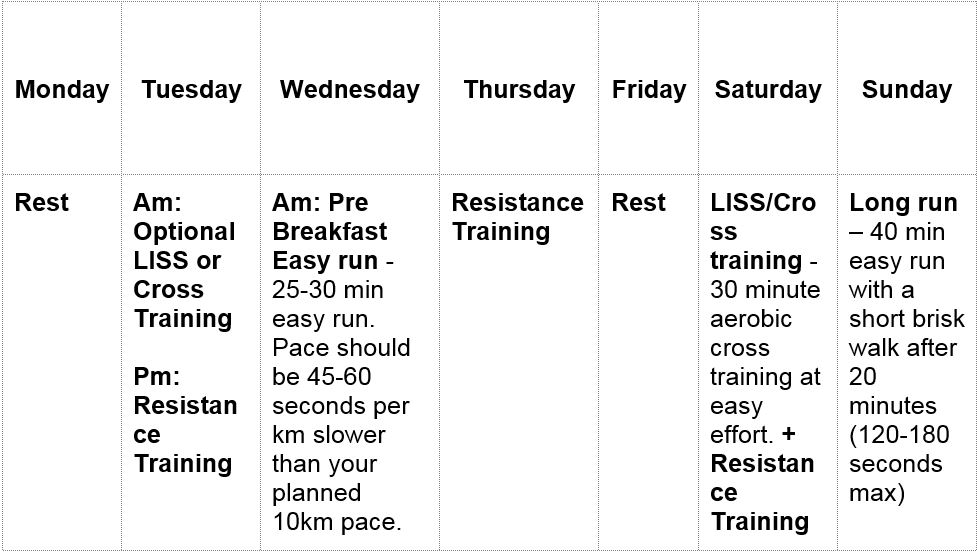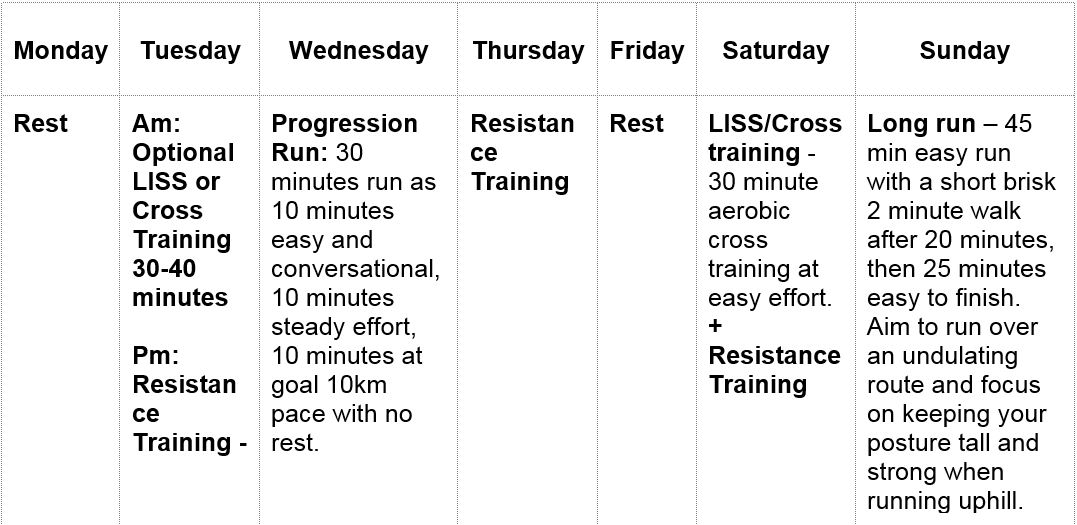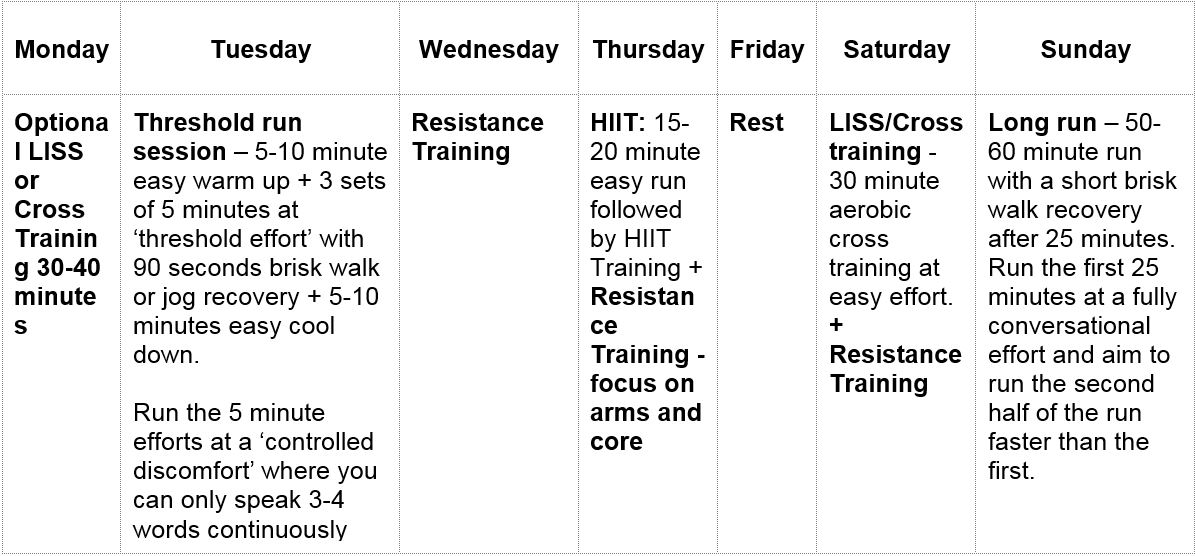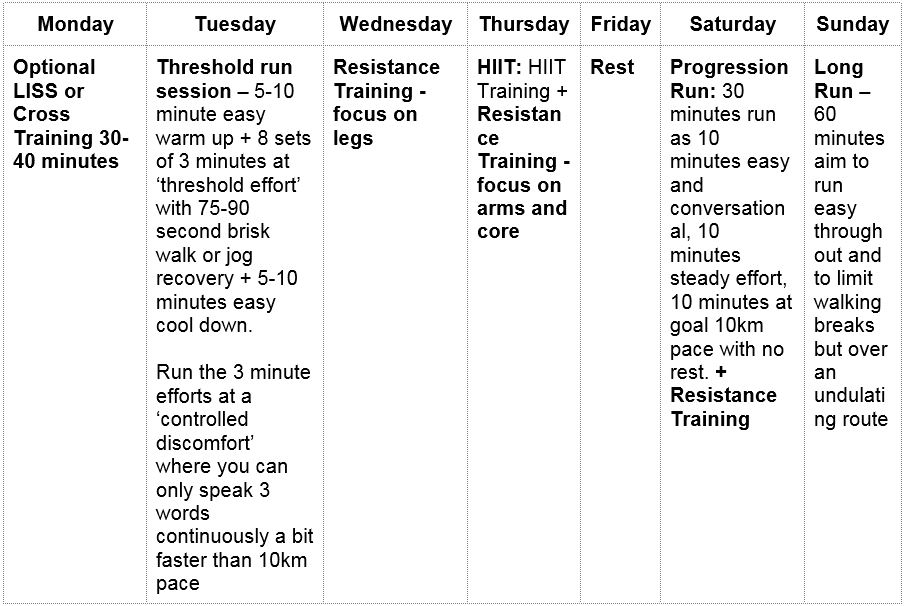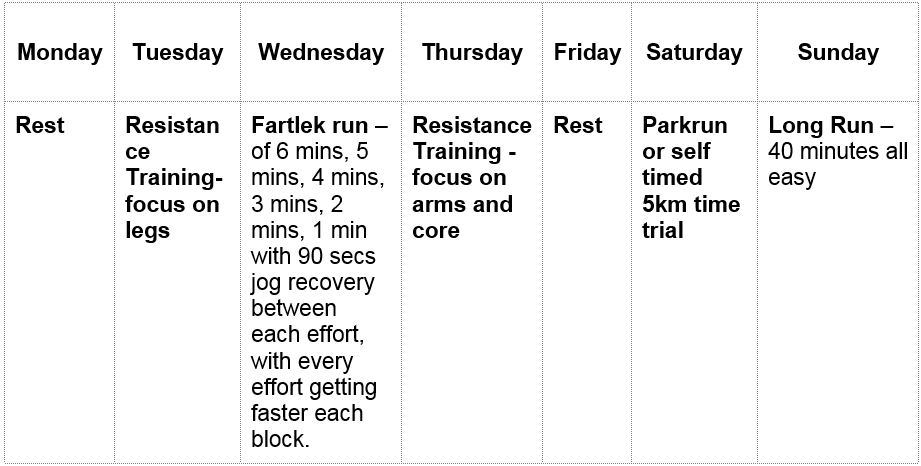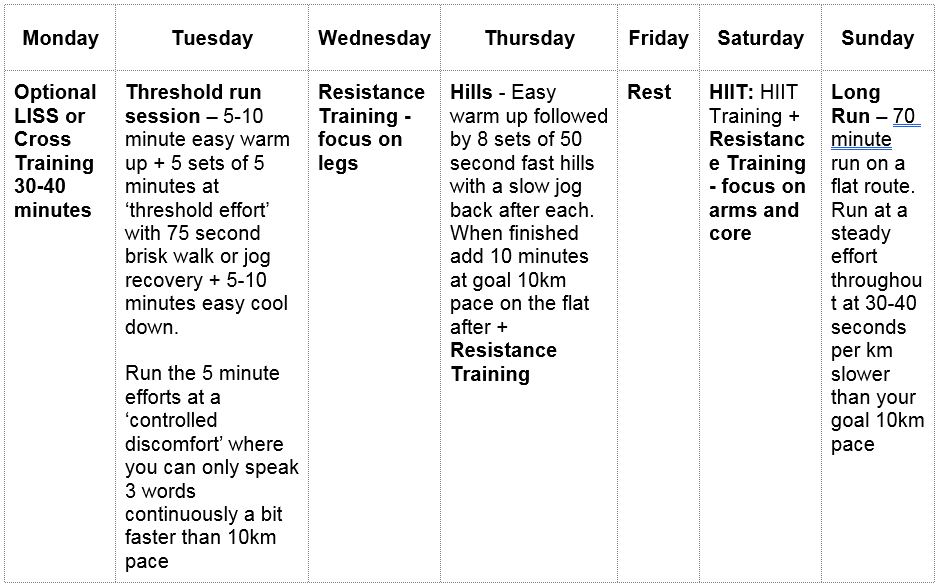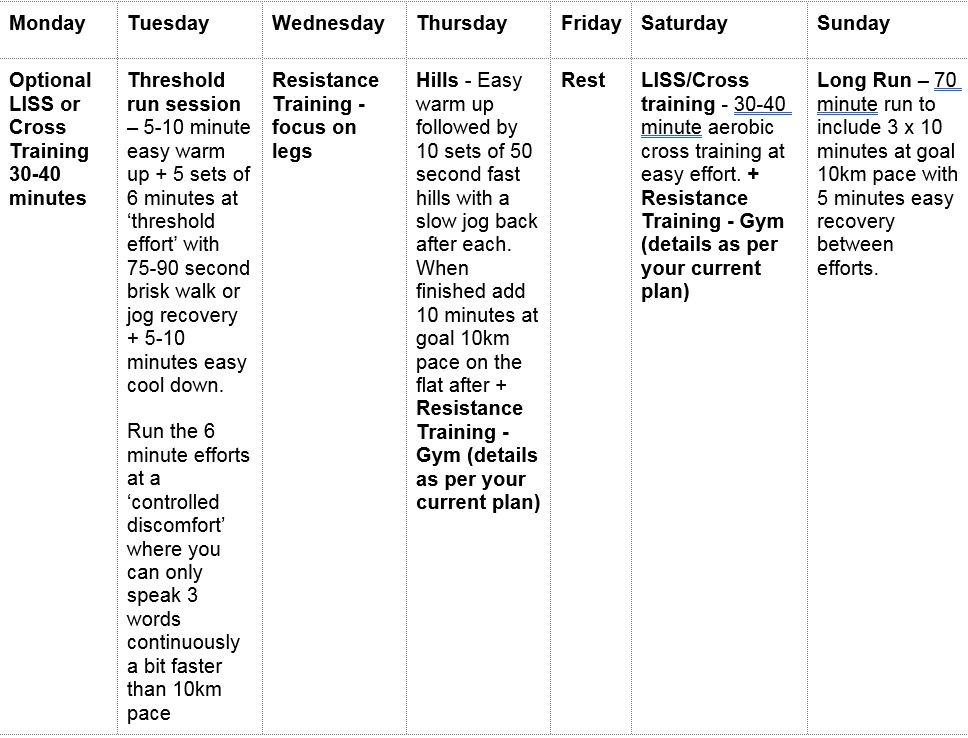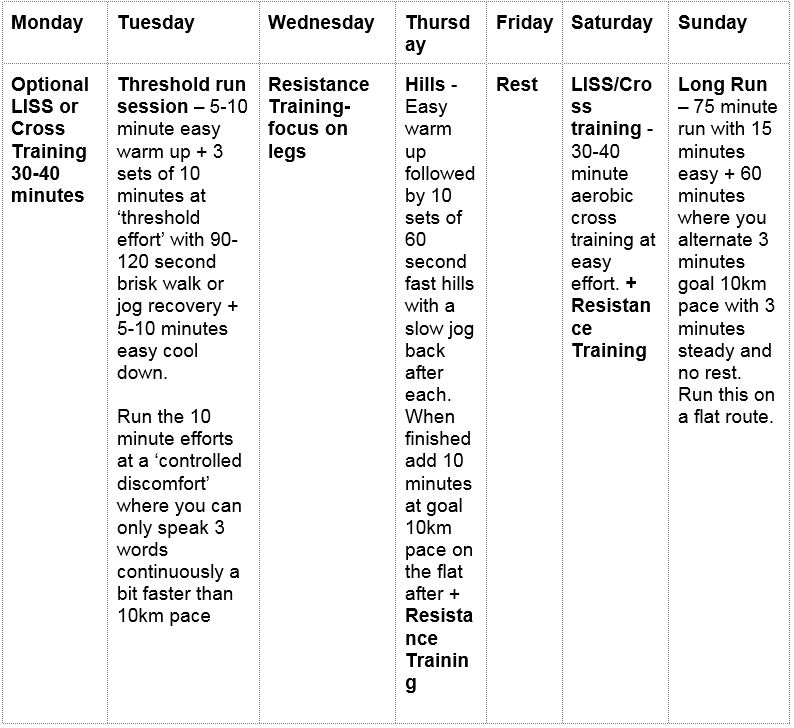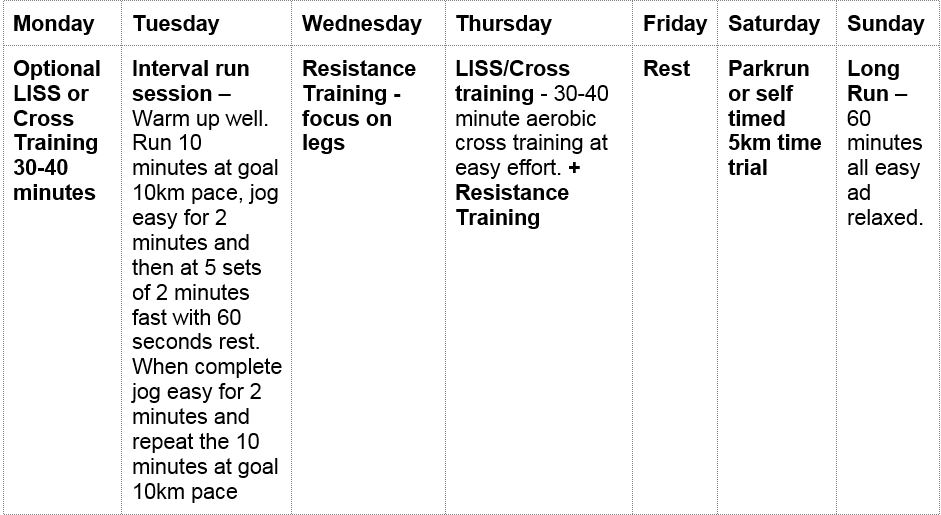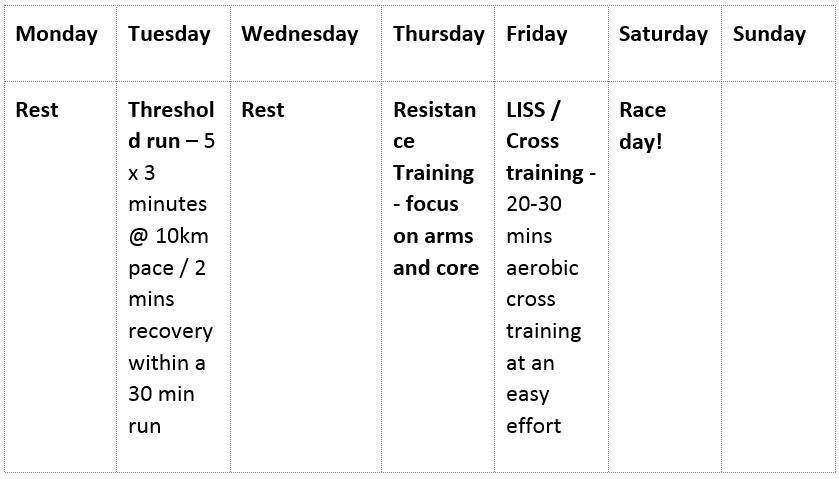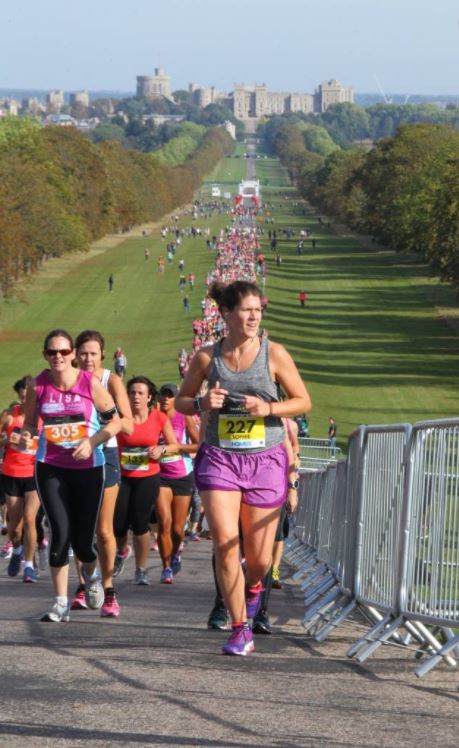This 10K training plan, brought to you by leading Saucony and RunninwithUs coach Tom Craggs, will have you race ready in just 10 weeks. Healthista’s Vanessa Chalmers takes on the challenge in preparation for the Windsor Running Festival 10K
With more 10km races than ever happening across Britain this October, Healthista have decided to bring you a 10K training plan from a top expert – with me as your guinea pig. Over the next ten weeks I’ll be following this plan, then reporting my results at the end.
My running journey began like many others – splurging my money on a lot of kit, agonizing shin splints and an endorphin rush that left me beaming. Fast-forward four years and I am taking my hobby to the next level, signing up for the Boudavida 10K race at The Windsor Running Festival on September 23rd. An amateur runner, I’ve got a lot of work to do.
How long do I really need to train for?
My new coach, Tom Craggs who coaches with Saucony UK and RunningwithUs , insists 10 weeks is enough – even for a beginner. I enlisted his help with two goals in mind – finishing the race in 60 minutes (a pace of 6.00 km/hour), and er, actually finishing. The Boudavida 10K race has a fair amount of hills, which I have never attempted to run before.
Even for those who are starting from zero exercise, Tom says it is still achievabl
‘For most people I’d say 8-12 weeks is ideal’, says Tom, one of the UK’s most in demand coaches. ‘12 weeks is a luxury, but 8-10 weeks is plenty because that gives you a couple of weeks to ease into it, 5-6 weeks in the middle to progress your fitness and speed, and two weeks at the end to cut back on the training a bit’. Even for those who are starting from zero exercise, Tom says it is still potentially achievable, but it may feel harder.
I have never considered pushing further than 5K until now – I need a challenge, albeit a small one. It’s not exactly a marathon, but if you are an amateur chilled out runner like me, it’s an achievable goal to start with.
If you are taking up the 10 weeks to 10K with me, please tag us in your social media posts! We are on Twitter, Facebook and Instagram and welcome any questions. I’ll be back in September with a review of the plan and tips from what I learnt along the way.
What to expect in this plan
Running In this plan, you will expect to see threshold runs, long runs, hill runs and fartlek runs. To see a full explanation, head to the bottom of this post to see a full glossary. In a nutshell, the training will be made up of different paces. These are: easy runs that you can do while you have an easy chat and at about 6/10 effort; steady runs, which are working at about 7/10 effort; threshold running, at a controlled discomfort and 3-4 word answer pace, 8/10 effort and interval running, which is 9/10 effort.
LISS/Cross training LISS stands for low intensity steady state training such as walking and cross training and also includes non-running cardiovascular exercises including bike, elliptical, swimming, rowing, aqua-jogging or even power walking. Cut down on this training if you become too tired to complete your key runs.
Resistance training This type of training works the muscles primarily (as opposed to cardivasulcar which works the heart and lungs). It can be bodyweight exercises such as lunges, squats or core work, and the addition of dumbells or resistance bands creates a more intesnse workout. The resistance training is not compulsory, nor is the HIIT work. RunningwithUs suggest variety in training will help you remain injury free and develop more strength endurance. If you decide to take it on, you can find videos such as Sweaty Thirty 30-Minute fat burning workout on Healthista’s YouTube. I personally use Kayla Itsines Bikini Body Guide circuits which are half an hour.
HIIT High intensity interval training is not essential in this plan. The HIIT sessions involve a 15 minute run with a 30:30 setupd. 30 seconds will be spent sprinting at 90-100% effort (about 10-17kmph) and 30 seconds will be at stand still or cruising.
What to eat
‘There are a lot of different views on exercise and nutrition, but one thing that’s generally agreed is that when you’re training at a harder and faster intensity, your body needs carbohydrates’, advises Tom. ‘We would recommend a clever carb rich diet, with things like wholegrains, oatcakes and sweet potato’.
If you have a higher intensity training session in the evening you haven’t eaten enough carbs during the day, the chances are you might end up not doing it
A lack of energy from carbohydrates can lead to quitting a run before it’s started. Tom says my diet needs to be 50-60 per cent carbs. For pre-breakfast morning sessions, Tom recommends making sure your meal the evening before has a good amount of carbs. For evening sessions, make sure you have enough during the day.
Rest
Amongst all the chaos of upping my game, I need to make sure I take some time out to recover. It will be lights out at 10pm to maximise my sleep, activating growth hormones and controlling cortisol and stress levels. This should be made easier by reducing alcohol, caffeine and digital devices late at night (I don’t know which one will be the most difficult…). RunningwithUs also raises the point that if you are regularly tired, no matter how much sleep you are getting, if you feel your diet is good, but you still lack energy, you may be training too much.
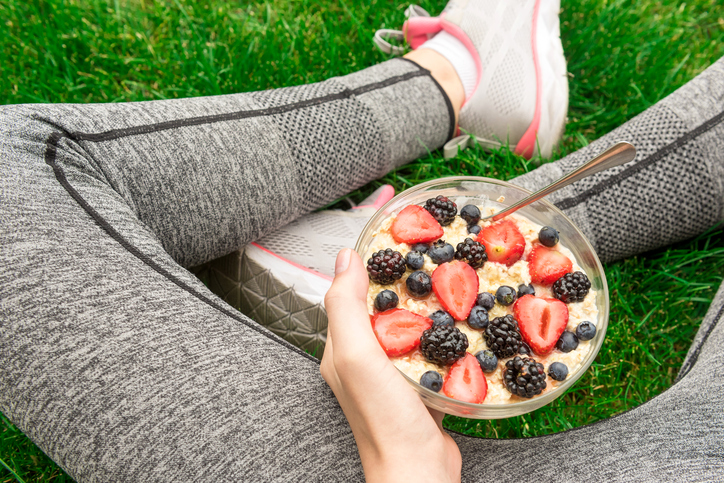
10K training plan for 10 weeks
Running coach Tom Craggs from RunningwithUs brings you a detailed plan to progressively improve fitness in 10 weeks.
Week 1
The goal for this week to is set a good routine. Think about when the best time is for you to train and put it in the diary. If you lead a busy life, set that alarm and get out early.
Trainer Tips: Remember to stretch well after each run. Focus in particular on hip flexors, glutes, hamstrings and calf muscles.
Week 2
This week we gradually build the volume of running in the plan with some longer, more sustained efforts. It can be easy to slip in week two as the initial motivation slips. The next 2-3 weeks are some of the most important in building up to your 10km so make sure you maintain the pattern we set last week. Be patient with yourself when training in hot weather.
Trainer Tips: Share your goal with family and friends and see if you can find others who may want to train with you. Having company of some of the sessions makes the journey of training feel easier and more fulfilling.
Week 3
Now we are in week 3 we tackle our first faster session. For ‘threshold effort’ run where you can speak only 3-4 words without needing to take a breath. It will feel quite uncomfortable but will show you that you do have more than one pace. Now the quality of the running is improving please consider keeping your faster run sessions on different days to your more leg focused conditioning sessions.
Trainer Tips: This week is when you might start to notice a little fatigue building. Alongside making sure you stretch after each run try to make sure you focus as hard on your recovery as you do your training. Aim for 8 hours sleep a night, or at least 15-30 minutes more. Banish smart phones and tablets from the bedroom and try to avoid caffeine and alcohol late at night.

Week 4
The ‘progression run’ building effort every 10 minutes throughout the run is a great one for pace judgement. Remember to keep the first 10 minutes easy and build gradually. Too fast, too soon and you wont make that threshold or 10km effort at the end.
Trainer Tips: If you are finding your legs a bit stiff or tired when you start your run walk for 5-10 minutes to gradually warm the muscles up. Make sure you are really eating healthily, snacking well between meals and making sure you are getting in a good range of vitamins and minerals to support your body to get stronger.
Week 5
The ‘fartlek’ run this week should show that you have 2-3 gears you can work though. Aim to really change up the paces – push yourself! Include the 6/5/4/3/2/1 efforts within a 45 minute run. Start with six minutes at 10km pace and get faster each block as you move through, finishing with one minute hard!
Overall this week is a little bit lighter to give your body some extra recovery time so we drop HIIT training and cut back to 2 resistance sessions.
Trainer tips: To get your mind and body ready for race day consider taking part in a ‘parkrun’ this weekend (parkrun.org). If you cant make it to parkrun complete a self timed 5km time trial.
Week 6
The ‘threshold run’ continues to build which will give you the essential endurance needed for the 10km alongside a longer sustained run at the weekend. As Vanessa’s race is a hilly 10km, the plan makes sure the body is used to running strongly on hills over the next 2-3 weeks. Look for a hill with a steady gradient of between 4-6%. Run up strongly but not at a full sprint. At the end of each effort you should feel out of breath but not totally destroyed.
Trainer tips: Be disciplined on the pace of your long run, we are still building time on feet this week so stay at a controlled effort and aim to keep the final 20 minutes at the same pace as the first.
Week 7
As the plan becomes more running specific, HIIT training is now dropped from the plan. This week we also add some goal race pace into your long run.
Trainer Tips: The Tuesday and Thursday session should be run with fuel in your tank so make sure you have eaten some carbs.
Week 8
This week is similar to the last but a little harder. It is important to make sure there is a sensible balance between hard and easy training in your week so if you are feeling tired take Saturday as an additional rest day.
Trainer Tips: Aim to drink 2-3 litres of fluid a day sipping regularly on water or even water with electroyle tablets (e.g. High5 Zero). Avoid drinking caffiene with your main meals as this can limit some of your nutrient absorption. As your peak weeks of training kick in your may wish to monitor alcohol consumption which can have a big impact on your recovery.
Week 9
The long run cuts back this week as we get you prepared for race day. Keep it all easy and relaxed a lot slower than your goal 10km pace. Repeat the parkrun or self timed 5km from a few weeks back – the goal is to have progressed!
Trainer Tips: Hills and HIIT are now gone from the plan because you need to give your legs time to freshen up before race day.
Week 10
This week less is more. Your focus should be on feeling fresh for the 10km. Cut back on leg based resistance training this week.
Trainer Tips: Don’t be tempted to try to play catch up with any missed training over the last two-three weeks. The runs in the plan are purely there to keep your legs ticking over. Look back over the training you have banked over the last 10 weeks. Think back to those two or three runs that went really well and carry those positive thoughts with you over the last few days into the race.
You don’t need to carb load for a 10km so eat normally this week and don’t change the routines that you have built up over the last 10 weeks. You will still be training on the same days to help keep these patterns.
On the day
On race day give yourself plenty of time to get to the start, eating your normal breakfast (I’m going to eat carb-heavy such as a curry with brown rice or bulgur wheat the night before and then a smoothie in the morning) and make sure you stay warm. Your body has the ability to store about 90 minutes of the stored sugars and carbs in your muscles, so with a decent breakfast you should have enough energy to do the whole race.
When the gun goes take a deep breath. Hold yourself back in the first 10-15 minutes. The adrenaline will want to drag you faster than you have practiced so slow it down. After half way keep consistent and aim to try to run the second half a little faster than the first – keep your eyes of the runners in front and try to pull a few in/takeover them. As you cross the line put a big smile on your face and pump the air – well done you deserve that moment!
What I will use to help my training
- I will use Healthista Body Food, £18.95, during my training by adding a scoop to my water bottle. The antioxidant blend helps boost metabolism and the ingredients yerba mate, green coffee bean and maca extract could help boost my energy.
- Magnesium is a popular calming agent and sleep aid. Being rubbish at relaxing myself, I’m hoping the Magnesium Malate capsules from Biocare, £13.65, will help me.
- Healthista’s Digital Director Yanar recommends I use Clif Bar’s to refuel my energy after intense sport. She is a marathon runner so I trust her judgement. I’ve given the Coconut Chocolate Chip bar, £1.60, a taste, and I’ll never turn back – delicious!
What the fartlek? Here is all the running lingo explained
Long Runs (LR)
Long runs are vital in your plan and key to racing well in long distance races from 5km – marathon. At first, concentrate on increasing the time on your feet rather than worrying about distance. Start off by heading out for at least an hour and run at a conversational pace or 6/10 effort. Gradually this will build. These runs improve your muscular endurance and condition your body to burn fat as its primary fuel source.
Threshold Runs (THR)
After the long run, threshold runs are probably your most valuable workouts. They are run at a controlled brisk pace, about 80–85% of your maximum heart rate. You’ll only be capable of uttering a couple of words. Tempo/threshold runs improve your lactate threshold (the speed above which your body struggles to cope with the lactic acid created by burning energy without oxygen), your running economy and aerobic capacity.
Continuous Hills (CH)
Hill running develops strength in your muscles and tendons without putting them under the type of stress they are exposed to during faster running. Run up a 5-10% gradient for 45-90 seconds at a ‘threshold effort’. Turn immediately at the top and run down the hill at the same effort, then turn at the bottom and repeat without any recovery until the rep time ends. Like a tempo/threshold run, a hill session is time to concentrate, as you should be working at about 80–85% of MHR and be able to utter just a few words.
Fartlek (F)
This is a Swedish term that literally means “speed play”. It involves a number of bursts of effort over a variety of distances with a variable recovery. Originally the length of effort was based on the terrain, for example, pushing harder every time you came to a climb, no matter how long it was. You can adapt it for your needs.
Interval Training (IT)
Intervals help to boost specific race pace speed and involve running timed efforts with a controlled recovery. The effort level is around 85–100% of maximum heart rate, depending on the duration of the event you are training for and the length and volume of intervals used. A typical example might be 6 x 3 minutes at 5km race pace with a 90 second jog recovery.
Ready, set, go!
Tom Craggs is one of the UK’s most in demand young coaches and works as coaching consultant to many of the UK’s biggest sports brands. He has a fantastic record of coaching runners from beginners right through to elites. Tom is also an Advanced Personal Trainer working with several well known TV and media personalities and coach to Elle Magazine, Vogue and Shortlist. Tom’s training advice can also be found in Runners World, Men’s and Women’s Running and in newspapers such as the Telegraph on a regular basis. Follow him on Twitter.
READ MORE:
8 best running shoes for women
9 things you need to run a marathon
Marathon training tips – last minute advice from the experts
How to exercise to lose weight – the science behind HIIT training
How music affects mood – 7 ways to get focused, calm or motivated with sound
Like this article? Sign up to our newsletter to get more articles like this delivered straight to your inbox.





